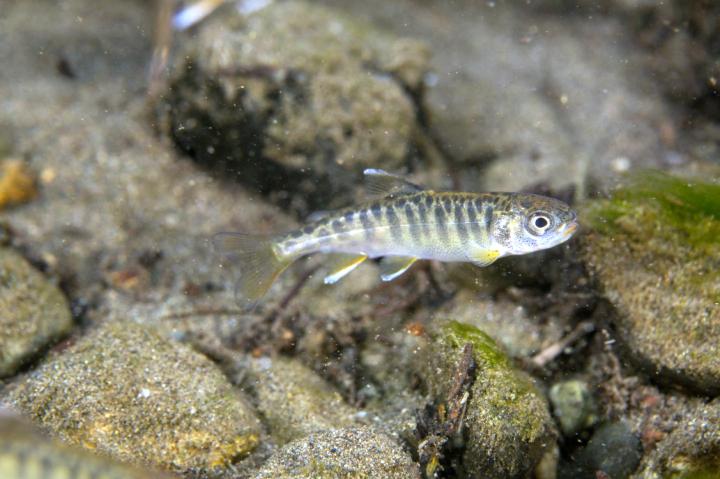
Credit: U.S. Fish and Wildlife Service
A new University of Alaska-led study provides the first evidence that declines in many of Alaska’s chinook salmon populations can be attributed in part to climate-driven changes in their freshwater habitats.
Alaska chinook salmon runs have decreased during the past decade, leading to fisheries closures and prolonged economic and cultural impacts to local communities. With Alaska’s climate warming twice as fast as the global average and experiencing changes in precipitation and streamflow, the research team set out to understand if changing conditions in fresh water — where salmon spawn and rear — played a role in recent declines of chinook populations in the Cook Inlet basin of Southcentral Alaska.
The study examined historic chinook populations and modeled environmental conditions to estimate how stream conditions affected salmon productivity from 1980 to 2009. By using fisheries catch and spawning abundance data collected by the Alaska Department of Fish and Game, along with stream temperature data collected by Cook Inletkeeper, researchers were able to investigate how freshwater habitat conditions varied for 15 different chinook populations.
Heavy rains in the late summer and fall — when adult salmon spawn and their eggs incubate — led to less production. However, above-average rainfall during juvenile rearing was beneficial. Productivity also declined substantially when stream temperatures rose above 64 degrees Fahrenheit for a week or longer during spawning. In particular, chinook productivity was very low during a period of poor freshwater conditions, including hot, dry summers and heavy fall rains, from 2003-2007. Salmon spawning during that five-year span produced 57% fewer surviving offspring than the previous long-term average, leading to population declines and fisheries closures in the late 2000s and early 2010s.
“Scientists have known for a long time that ocean conditions influence the size of Alaska chinook salmon runs, but until recently we did not have enough data from individual salmon streams to test for more localized factors like rainfall and water temperature,” said Erik Schoen with the Institute of Arctic Biology at the University of Alaska Fairbanks, one of the study’s lead authors. “By zooming in on distinct watersheds, we found that those freshwater conditions really do matter for the strength of salmon runs.”
The findings were published July 9 in a paper in the journal Global Change Biology. Other lead authors included Leslie A. Jones and Rebecca Shaftel with the Alaska Center for Conservation Science at the University of Alaska Anchorage.
The effect of stream temperatures during juvenile rearing was highly variable among populations. When warm streams got warmer, productivity dropped. But when cold streams got warmer and better for rearing, productivity increased.
Those findings support predictions of previous studies that the effects of climate warming will vary across watersheds and habitats, harming some populations while benefiting others.
“Last year at this time, Alaska experienced a record heat wave, and we measured stream temperatures above 80 degrees in our warmer chinook systems,” said study co-author Sue Mauger with Cook Inletkeeper, a Homer-based conservation organization. “Understanding stream-specific responses to climate change will be critical for better management of our valuable fisheries.”
###
Other contributors to the paper included Curry J. Cunningham, Alaska Pacific University; Daniel J. Rinella, U.S. Fish and Wildlife Service; and Adam St. Saviour, Alaska Department of Fish and Game.
Media Contact
Jeff Richardson
[email protected]




